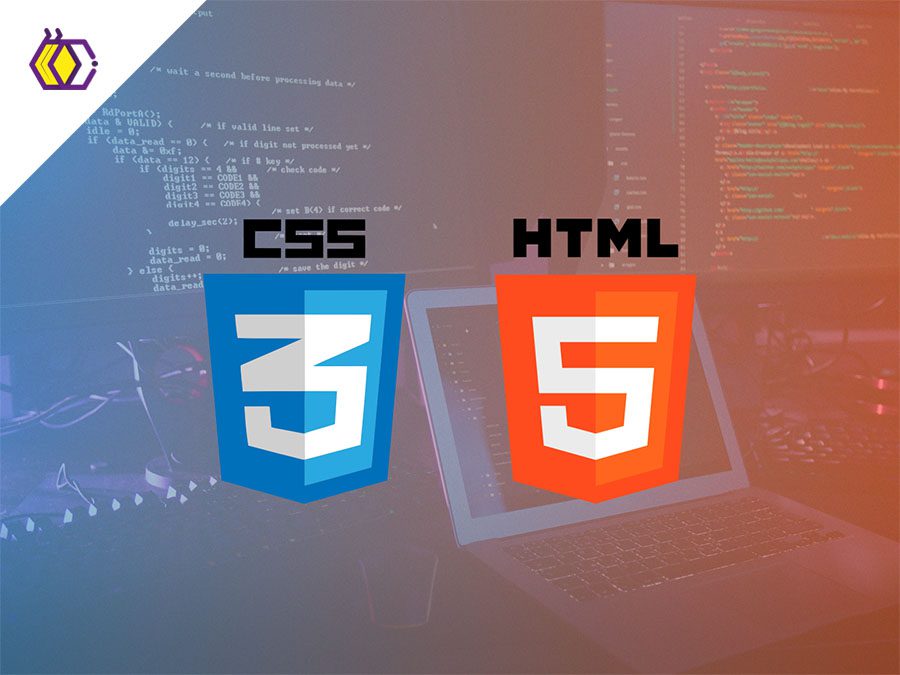

HTML5 and CSS3
(7 minutes of reading) In 1991, Tim Berners-Lee designed HTML to make sharing documents easier and faster. With the creation of the World Wide Web, HTML became a tool used by everyone and everything. As a result of the growth of HTML, CSS emerged, because the more HTML was used, the more developers used their creativity to make pages beautiful and stylish. However, all this aesthetic part was written in the same file as the structural part, making them gigantic and increasingly difficult to understand. Thus, in 1995, CSS was created to deal with the aesthetic part of the page, separately from the structure, that is, the role of HTML. HTML Its name comes from the English Hyper Text Markup Language, which means that HTML is not considered a programming language. Imagine a web page, like the one on our blog that you are reading now. It is possible to notice that there are several separate elements, such as header, title, paragraphs, images, and many others. The entire organization of these elements is done by HTML. It is used to create the entire structure of the page, and, for that, it uses the famous tags to define where each type of element will be implemented. For example, if you want to insert a paragraph on the screen, you can use the tag for that, placing the desired text inside the element, as shown below:This is a paragraph
In short, we can say that there are several tags of different structures to assemble the skeleton of the page. HTML5 is an improved version of the original HTML standard (if you want to know more about HTML5 read this other article on our blog). HTML5 was developed to meet the increasing demands presented by today's media, cross -device and mobile internet needs. It is an excellent tool for cross-platform mobile application development because many of its features have been adapted with consideration for access on low-powered devices, including Tablets and Smartphones. HTML5 provides a common interface to make loading components simpler. For example, HTML5 does not require the Flash plugin because the element will run on its own. HTML5 As stated earlier, HTML5 is the latest version of the markup language used to create websites. Although it is very similar to the previous versions, it has some new features that are super handy. Below are the main benefits of HTML5: - HTML5 has video and audio playback. In previous versions, developers were required to use third-party programs to play videos and audios. This ended up causing a lot of errors. HTML5 solved this problem with full support for video and audio. - HTML5 offers offline caching, so visitors can load certain elements on a web page without an active internet connection (but they must have accessed the site before). If a visitor's internet connection is low, they can still load the main elements of the site. Now, how is it possible to make this paragraph colored? Or change the font of the letter? That's where our next technology comes in: CSS. CSS Cascading style Sheet, better known as CSS, is a styling language that, like HTML, is not considered a programming language. It is responsible for separating the structural part of the application (which will be in the hands of HTML) from the aesthetic part. To use CSS, we use the following syntax: strong { color: blue; } h1 { font-style : italic ; } The selector will be the element we are going to style (it can be a tag, a class, an identifier, etc.), the property is what we want to change (color, font-size, width, etc.) and the value is the change to be made done. When using an HTML tag, like the one in the example above, you can style it like this so that the paragraphs are blue. p { color: blue; } One very interesting thing about CSS is that it can be written inside an HTML file, using style as a < style > element or as an attribute of some otherelement. It can also be written in a separate CSS-only file by importing it into the HTML document as follows: It is important to point out that there is the possibility of using more than one CSS file at the same time, to style the application. Hence the word “cascade”. This allows for several different interactions, but care must be taken not to get lost and make the code confusing, always following the rules for this. CSS3 CSS has always been an extraordinary tool, with which countless projects can be carried out easily, quickly, and efficiently. This new version, CSS3, is even simpler and has been very well accepted by web developers. Below we list the main changes in CSS3: - CSS3 is compatible with older versions of the language, that is, designers do not need to abandon the work they did with versions prior to CSS3. This new language can be reworked into old modules as well. However, there may be some speed issues during conversion. - CSS3 is made up of small modules that make the application easier and simpler to use. Selectors, colors, backgrounds, borders, text effects and 2D or 3D transformations are some of the most useful modules that CSS3 offers. - CSS3, being independent, loads much faster than its precursors. It is very compatible with all available browsers. The individual modules also help to save a lot of time during development, implementation, and end of production. CONCLUSION With the use of HTML5 and CSS3, companies are increasingly developing and expanding web content and applications with the purpose of creating well-defined and accurate pages and systems that can be accessed on different devices, browsers, and operating systems. Therefore, knowing these two languages in depth will make you stand out in the job market. Not to mention that with them you save time, make your code shorter and reduce the chances of errors. If you were in doubt whether it would be worth studying these two languages, you can play for sure you won't regret it. What did you think of our article? Be sure to follow us on social media and follow our blog to stay up to date!



